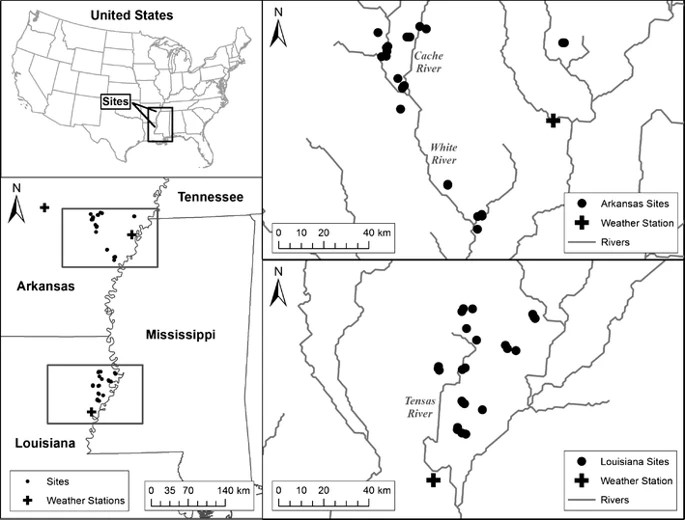Wetland Reserve Program enhances site occupancy and species richness in assemblages of anuran amphibians in the Lower Mississippi Valley, USA
Abstract/Summary
We measured amphibian habitat use to quantify the effectiveness of conservation practices implemented under the Wetland Reserve Program (WRP), an initiative of the U.S. Department of Agriculture’s (USDA) Natural Resources Conservation Service (NRCS). From February to June 2007, we monitored quantified calling male anurans at sites that were in 1) cultivated cropland. cultivation; 2) formerly in agriculture cultivated cropland but but later restored through the WRP; and mature bottomland hardwood forest. Sites were, all located in two watersheds within the Mississippi Alluvial Valley of Arkansas and Louisiana, USA. We estimated estimated detection probability probabilities of detection and site occupancy within each land use category using a Bayesian hierarchical model of community species occurrence, and derived an estimate of species richness at each site. Relative to agricultural sites, nine of 1l species detected were significantly more likely to occur at WRP sites and six were more likely to occur at forested sites. Derived estimates of species richness were also higher for WRP and forested sites, compared to those in cultivated cropland. Almost half (45%) of the species responded positively to both WRP and forested sites, suggesting indicating that patches undergoing restoration may be an important transitional habitats. Thus, WRP conservation practices are successful in restoring suitable habitat and reducing the impact of cultivation-induced habitat loss on amphibians in the Mississippi Alluvial Valley.
Publication details
| Published Date: | 2013-12-03 |
| Outlet/Publisher: | Wetlands 34:197-207 |
| Media Format: |

Locations of study sites in the Tensas River Basin of Louisiana and the lower White and Cache River Basins of Arkansas, USA. Symbols represent sites at which automated recorders were deployed to monitor calling anuran amphibians, as well as locations of weather stations from which archived National Oceanic and Atmospheric Administration precipitation records were used to derive cumulative rainfall during each sampling week
ARMI Organizational Units:
Southeast - BiologySouth Central - Biology
Topics:
ManagementMonitoring and Population Ecology
Place Names:
ArkansasArkansas Delta
Louisiana
Louisiana Delta
Lower White/Cache River Basins, Arkansas
Mississippi Alluvial Valley
Southeast U.S.
Tensas River Basin, Louisiana
United States
White and Cache River Basins of Arkansas
Keywords:
agricultureamphibians
ARMI
call surveys
ecosystem services
habitat
habitat alteration
habitat effects
land cover/land use
management
monitoring
occupancy
pond-breeding amphibians
restoration
wetlands
Wetlands Reserve Program
